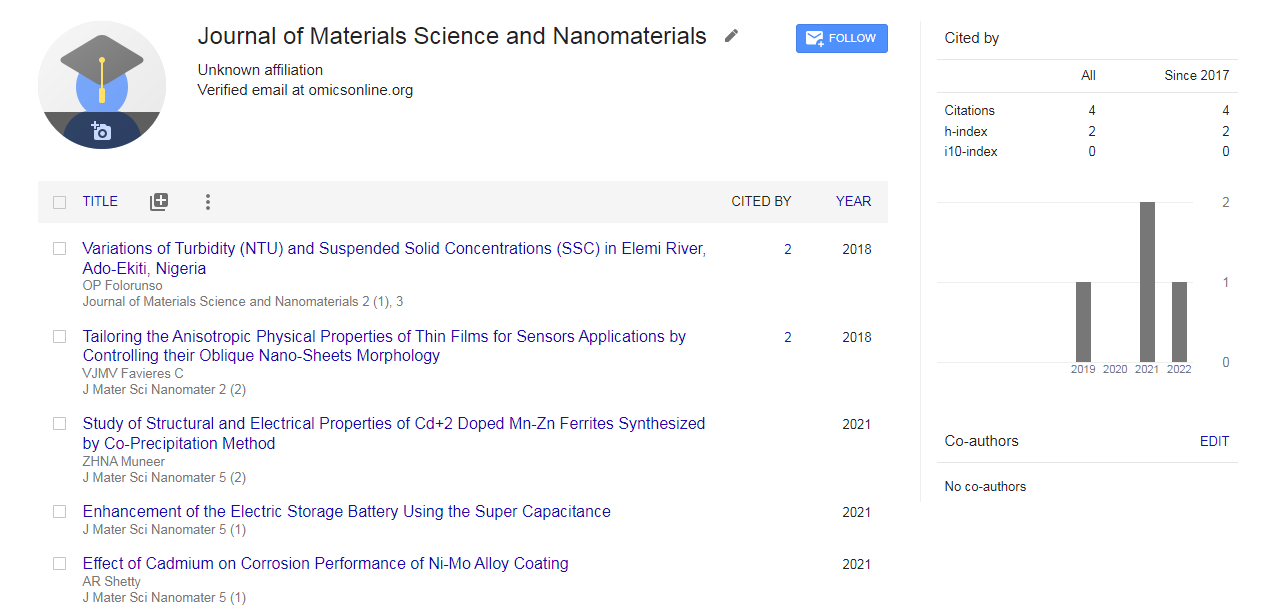Silver and Copper Nanoparticles by the Pulsed Plasma in Liquid and Their Antibacterial Properties
*Corresponding Author:
Copyright: © 2020 . This is an open-access article distributed under the terms of the Creative Commons Attribution License, which permits unrestricted use, distribution, and reproduction in any medium, provided the original author and source are credited.
Abstract
One of the most important properties of silver nanoparticles is their antimicrobial action against several bacteria, fungi, and viruses. Surprisingly, nano Ag is healthy and non-toxic to low concentrations of human and animal cells, since the possible toxicity of silver nanoparticles to the atmosphere is considered extremely low compared to other materials. Silver and copper nanoparticles were prepared by using pulsed plasma in liquid method. This is a low voltage pulsed spark discharge in a dielectric liquid. The electrodes of about 2 mm in diameter and about 10 mm in length made of pure silver rods were submerged in a 50 ml pyrex beaker filled with deionized water and plasma (200 V, 50 A (peak), 10 μs) was generated between the silver electrodes for about 15 min. Polyvinylpyrrolidone (PVP), Cetyl trimethylammonium bromide (CTAB), Sodium n-Dodecyl Sulphate (SDS) were used as a stabilizing agents. The XRD spectra of the prepared samples indicated the face-centered cubic crystalline structure of metallic silver nanoparticles. Spherically shaped silver nanoparticles of diameter 2.2 ± 0.8 nm were synthesized by the pulsed plasma in aqueous solution with PVP surfactant. Similarly, silver nanoparticles of diameter 1.9 ± 0.4 nm size were obtained with SDS surfactant. In vitro antibacterial properties of all the synthesized silver nanoparticles against the Gramnegative bacteria Escherichia coli were examined by Kirby–Bauer disk diffusion susceptibility method. It was noticed that the stabilized with SDS silver nanoparticles demonstrated a better antibacterial activity against bacterial strains as compared to the silver nanoparticles stabilized with PVP, CTAB.

 Spanish
Spanish  Chinese
Chinese  Russian
Russian  German
German  French
French  Japanese
Japanese  Portuguese
Portuguese  Hindi
Hindi 